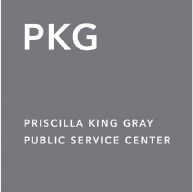PKG Fellow and IDEAS Alum Andrés Bisonó León Featured in Forbes!
Andrés Bisonó León is the chief executive and founder of SOS Carbon, the 2023 IDEAS Challenge $10,000 grantee.

GETTY
Are you beach-bound this year? Sharks are one issue. But so is an ugly form of seaweed called sargassum, a byproduct of warming oceans, fertilizer runoff, and climate change. The Great Atlantic Sargassum Belt stretches from West Africa to the Gulf of Mexico, with enough crud to fill up the state of Delaware.
But some good news is associated with this latest plague—one that is killing ocean life and devastating local tourism economies. Entrepreneurs from the Caribbean Islands of St. Lucia and the Dominican Republic are harvesting the smelly seaweed and turning it into plant fertilizer used in commercial farming and pulp used to make paper. If they succeed, their efforts will save rainforests and curb climate change.
“The public and governments suffered from mass panic associated with this seaweed washing ashore,” says Johanan Dujon, founder and chief executive of St. Lucia-based Algas Organics, in an interview. “I had to do something about it and learned how to turn this raw material into a resource.”
Dujon, a Forbes 30 Under 30 in 2020, patented a technology to extract pulp fiber to make paper. The tool also extracts polysaccharides and amino acids to make bio-fertilizers. He hires at-risk youth to clear the beaches of sargassum, which directly impacts tourism dollars: The disgusting seaweed litters the beaches and is shown to diminish hotel occupancy rates by 10%.
Let’s look at replacing or supplementing traditional pulp: Typically, loggers cut down trees and remove the bark. They cook the resulting wood chips at 180 degrees Celsius for 10 hours. In contrast, Algas cooks the sargassum-derived pulp fiber at 100 degrees Celsius for two hours, reducing the carbon impact by 80%. The alternative source of fiber is, therefore, saving rainforests and the livelihoods of indigenous peoples.
He is working with some of the world’s largest conglomerates, noting that “adoption is near because our material is 40% cheaper, we don’t cut down trees, and we prevent carbon emissions.”
The primary paper conglomerates are Georgia Pacific, International Paper [IP -0.8%], and Procter & Gamble [PG +0.3%]. Those enterprises are committed to reducing their Scopes 1, 2, and 3 emissions:
- The energy they use to run their operations.
- The electricity they buy from others.
- The emissions tied to corporate activities and suppliers.
“There is less footprint by using seaweed,” says Dujon, who has been removing 2 million pounds of sargassum annually — a number that will rise to as much as 12 million pounds this year, all from Caribbean Islands. “We can reduce carbon emissions by 8 million metric tons with this fiber for paper, and potentially a half giga-ton yearly because we will have saved hundreds of millions of trees.”
To put the matter in perspective, the Great Atlantic Sargassum Belt contains 20 million metric tons of that putrid seaweed. That number doubled between 2011 and 2021. In St. Lucia, sargassum is piled 20 feet high in some places. The University of South Florida said sargassum levels are at record levels. Worse still, it will continue to get bigger and potentially migrate toward Florida. In other words, harvesters’ jobs never end.
Take SOS Carbon in the Dominican Republic, which MIT spun off in 2020: It takes a problem and turns it into an opportunity. To that end, the company transforms boats into high-capacity harvesters, collecting up to 150 pounds of seaweed daily in the Dominican Republic, Puerto Rico, and Mexico.
Specifically, it takes seaweed and dries it before processing it into biostimulants such as organic fertilizer used to feed and keep plants healthy. When farmers harvest their crops, they remove nutrients from the soil, which is replenished with fertilizers. However, hard rains can cause fertilizers to seep into local tributaries before entering rivers and oceans, causing algae to bloom and sargassum to flourish.
Using bio-fertilizers eliminates that problem, and it is cost competitive, says Andrés Bisonó León, chief executive and founder of SOS Carbon. “We only use a fraction of the sargassum that is collected,” he told me. “We dispose with most of it.”
But think of the impact. The sargassum rots, creating toxic gases that kill fish and coral reefs. Emissions result, and tourism declines; sargassum interferes with snorkeling, fishing, and swimming.
Consider Punta Cana, Dominican Republic, which attracts 8 million visitors yearly to its all-inclusive resorts: That’s off by 10% a year—800,000 tourists—because of excessive sargassum. I witnessed workers with heavy equipment hauling off the island’s sargassum.
“We can accelerate what we are doing in the Caribbean and build that supply chain network,” says León.”All the different agricultural groups see the benefits of this seaweed-based product: huge savings, reduced fertilizer use, and increased crop yield.” Stated differently, “Instead of going to the gym daily, you can go three times weekly, paying less and getting better results.”
Tags: Climate Change, IDEAS 2023, PKG Alumni, PKG Fellowships
